Quick Links
Wix is one of the most popular cloud-based website builders, with 200 million users on the platform in 2022.
Its user-friendly interface and drag and drop editor-style make it an ideal platform for beginners. Wix also has a free plan, which is a great way to get started building a website without having to put any money down.
Yet, creating a website is only half the battle. A fancy new Wix site won’t mean much if you aren’t showing up on search engines – as that’s the primary way new prospects will find you.
In fact, more than 1/4th of all the traffic Wix’s website gets is from search queries – with the keyword ‘Wix’ typed into Google more than 6.8 million times.
Search engine optimization (SEO) is integral for generating organic traffic to any website, and Wix’s sites are no different. While Wix has caught some flack for its SEO capabilities in the past, the platform has made some vast improvements.
Namely, the Wix SEO Wiz is invaluable for generating an SEO plan for your site.
With the right strategy, you can double your traffic by optimizing your Wix site for search engines – which is why we put together this guide.
So if you want your Wix website to get found on Google, you’re in the right place. Keep reading to learn everything you need to know about Wix SEO.
Understanding the Wix Platform
The best thing about Wix is that you can use it without any coding experience. Wix uses an intuitive drag and drop editor combined with customizable templates. That way, users can create everything from a menu for their restaurant to a list of products for an online store.
You can also get started using Wix’s free plan – where you can build a website without having to pay a membership fee. The catch is that you’ll have to display ads on your website – but it’s worth it if you’re a startup on a shoestring budget.
In a nutshell, Wix is the perfect website builder for small businesses, startups, and simple online stores. By using its editor and features, you can create a competent and visually appealing website in a few hours.
Yet, if you’re familiar with coding and desire more advanced builder features and SEO options, other platforms like WordPress or Squarespace are better choices.
Is Wix bad for SEO?
In the past, there was a bit of a negative stigma surrounding Wix and its SEO features due to its simplicity. Wix has since put new features and settings in place, largely addressing these criticisms.
In particular, the team at Wix resolved the following issues affecting Wix sites in the results pages:
- You can now add alt tags to images (crucial for letting the Googlebot know what your images show and how they relate to your content).
- You can now optimize meta descriptions and title tags for blog posts.
- You can use structured data markup (it wasn’t available in past iterations).
- Pages are no longer defined by a #, which improved the URL structure.
Fixing these problems was gigantic for the platform, as SEO is far less of a challenge for website owners now.
In 2019, Wix even started an SEO Battle to prove that Wix websites can and do rank at the top of search engine results. The winners (Marie Haynes Consulting) were able to rank #1 for the query ‘Wix SEO’ on Google.
As such, there’s no reason why you can’t dominate the website rankings and generate a ton of organic traffic using a Wix website.
Listing Wix’s SEO Features
For more proof that Wix is indeed SEO-friendly, here’s a rundown of the SEO tactics you can employ using a Wix blog or website:
Mobile-friendly templates
Your website must work on mobile devices to rank on search engines, especially Google – which uses mobile-first indexing. Wix has mobile-friendly templates you can use to make this easy.
Editable title tags and meta descriptions
In the past, there was no way to optimize these. Now you can create keyword-rich title tags and meta descriptions to enhance your on-page SEO.
Alt tags for images
An alt tag describes what an image shows, and it serves two purposes. It’s an accessibility feature for sight impairments – and it lets crawlers know how your images relate to your content.
Editable header tags
If you’re familiar with SEO basics, you know how integral your header tags are to your blogs. Distinguishing H1s from H2s and H3s is great for readability and SEO. (Also, don’t forget to use your targeted keywords in your headers)
HTTPS
If you run an eCommerce store through Wix, HTTPS is a must-have to keep your customer information safe. Google also likes to see safe and secure websites.
XML sitemap
While you can’t edit your sitemap in Wix, you still receive one, which is handy. You can upload it to Google Search Console to ensure Google has visibility of your website.
Google Analytics (GA) and Google Search Console (GSC)
The team at Wix knows how crucial it is to monitor metrics for your SEO campaign. That’s why they’ve made it effortless to connect GA and GSC to your Wix website for easy monitoring.
Canonical tags
Duplicate content is a massive no-no for SEO, and canonical tags are the remedy. Wix lets you place a ‘canonical tag’ on your preferred version of each web page. That way, you won’t wind up ranking two identical pages on Google, which will confuse the crawler and tank your SEO.
Decent PageSpeed scores
Wix sites used to struggle with PageSpeed scores in the past. The average Wix website now features a high PageSpeed score, thanks to some new updates. That’s great for SEO and your bounce rate.
301 redirects
404 Not Found pages are not the best for SEO. Now that you can use 301 redirects on Wix, you should replace all your 404 Not Found pages with them. Google and other search engines prefer 301 redirects (permanent), so use them instead of 302s (temporary changes only).
Begin with the Wix SEO Wiz
Everyone that builds a website on Wix gains access to their SEO Wiz.
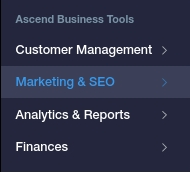
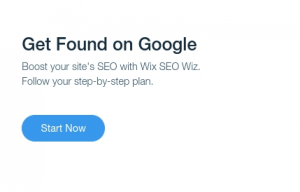
It’s a remarkable tool for devising an SEO strategy – especially for beginners.
If you don’t know much about SEO, this tool will help you understand what you need to do to rank higher on Google and other search engines.
The Wiz is user-friendly and works by providing a step-by-step
checklist for connecting and verifying your site with Google. That way, you’ll know for sure that Google was able to discover, crawl, and index your site.
Beyond making sure that your site gets indexed, the Wix SEO Wiz is designed to help you develop ways to improve your SEO, so you rank higher in the search results. It will ask you a series of questions about your business that it will use to develop an SEO strategy for you.
Setting up the SEO Wiz in Wix
Once you sign in to your Wix dashboard, navigate to the section dedicated to Marketing and SEO – as that’s where you’ll find the SEO Wiz.
Later on, it’s worth checking out the Analytics & Reports, Finances, and Customer Management sections so you can become a wizard at managing your online business.
If you’re well versed in advanced SEO techniques, your knowledge may be a bit beyond the capabilities of the SEO Wiz. It’s an SEO tool intended for beginners only, as is the entire Wix platform.
Part 1: Connecting and verifying your site
There are two parts to the SEO Wiz process. The first part involves adding essential information to your homepage that you need to connect your website to Google.
What kind of information do you need to include?
In general, the Wiz recommends that you have:
- A website that works on mobile devices
- A title for your homepage
- Targeted keywords in website content
- Meta descriptions
To include all this information, you’ll have a checklist and a detailed guide.
Part 2: Creating an SEO plan for your business
Once part one is complete, you’ll know for sure that you’re indexed and will show up on Google. Yet, you don’t simply want to show up on search engines; you want to rank high in the results.
That’s where part two of the process comes into play.
Here, the SEO Wiz will ask you to answer three questions about your business. Once you provide an answer, it will create a detailed SEO plan for your business.
All you need to do is answer these three questions:
- Do you have a physical business, or are you 100% online?
- Which three keywords do you feel best describe your business and what you offer?
- How would you describe your business, and what makes it unique?
That’s all the information Wix needs to create a customized SEO plan for your business.
The plan will provide suggestions on keyword usage, blog content, internal and external links, and more. That’s why it’s such an invaluable tool for those new to the world of search engine optimization. By using Wix’s SEO Wiz, you can gain a fundamental understanding of the basics of SEO and how to use them to generate organic traffic.
Keyword research and long-tail keywords
While the SEO Wiz is undoubtedly helpful, you’ll still need to do a bit of keyword research to come up with the three keywords you’ll choose for your business.
To help out with that, you can use our free Google Keyword Planner Tool to discover the keywords that relate most to your business and have low competition with high search volume.

If the competition for a particular keyword is too steep, you’ll have difficulty ranking for it. Instead, seek out keywords that have lower competition yet are still popular.
Pro tip: You should also mix long-tail keywords with your short-tail ones.
What’s the difference?
A long-tail keyword uses a long phrase instead of a short one. For example, ‘new shoes’ is a short-tail keyword, but ‘new shoes that fit perfectly’ is a long-tail keyword. Make sense?
An ideal keyword strategy makes use of both short and long-tail keywords. While long-tail keywords have lower search volume, they’re highly targeted and are more likely to convert. In fact, the average conversion rate of long-tail keywords is 36% – so it’s well worth using them.
Maintaining Your SEO Strategy
Okay, so by now, you should have an SEO plan put in place by Wix’s SEO Wiz.
What now?
It’s time to start checking the boxes off your SEO checklist. In other words, you need to make tweaks to your existing website and start using the keywords you researched.
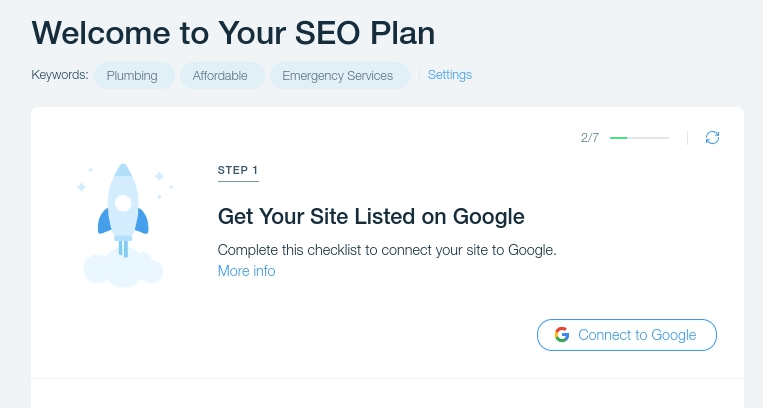
The good news is that most of these steps are straightforward and only require basic copywriting skills.
The first steps include:
- Updating the homepage title, so it’s SEO-friendly
- Write a description for your homepage using your keywords
- Optimize all your web copy with your keywords
- Make sure you have a responsive site that works on desktop and mobile
- Link your website to Google Search Console and sync Google Analytics for metrics
Technical SEO optimization
After that, you’ll need to do some technical tweaks:
- Write alt tags for all images
- Make sure website contact info is up-to-date
- Update all your social media links
- Set up hyperlinks on your homepage
- Rinse and repeat for Book Online, Services, and Products pages
SEO is a game that doesn’t end, so you shouldn’t complete this checklist and call it quits. Instead, you’ll want to regularly analyze your metrics to see what’s working and what isn’t.
If you have trouble keeping up with all these tasks yourself, you can always contact our SEO experts at The HOTH.
For now, let’s focus on how you can improve your Wix SEO. That includes optimizing your domain, tweaking your metadata, uploading a sitemap, and acquiring backlinks.
Select a ‘Good’ Domain Name
Is the name of your domain as important as the name of your business?
In many ways, it is, especially in the eyes of Google and other search engines. The strength of your domain name will play a large part in your SEO.
Wix’s editor allows you to create a secure domain name. That will make your entire website look professional and help your SEO.
If you don’t currently own a domain name, you can purchase one through Wix. Click on Main Menu > Settings > Domain to get to the menu.
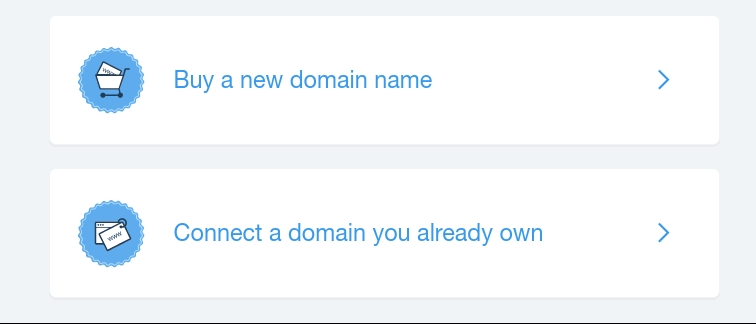
Your domain name should be short, memorable, and easy to type into a browser. Also, do your best to include your business name or something about what you provide.
Don’t Forget Your Metadata
All too often, website owners forget about and neglect the metadata on their websites. This is a fundamental flaw because your metadata is one of the first things crawlers will view.
In other words, your metadata is how Google understands what your pages are about.
If you know anything about how search engines work, you know that’s a huge deal. Google’s goal is to match the most relevant, highest quality content with a user query.
So if Google can’t tell what your website is about from your metadata, your chances of ranking on page one diminish greatly.
That’s why each of your web pages MUST have a title tag and meta description.
Your title tag should not exceed 60 characters and should contain your target keyword. Your meta description should be no more than 150 characters and should contain your target keyword and a few others if you can fit them in.
To add title tags and meta descriptions, go to Wix ADI. From there, select the page you want, click the gear icon, and click on Page SEO. That’s where you’ll be able to enter your metadata.
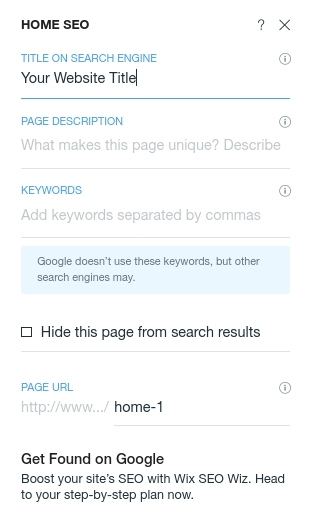
Once you add a title tag and meta description to your homepage, rinse and repeat the process for every page on your website.
Upload Your Sitemap to GSC
An XML sitemap will help search engines discover, crawl, and index your site. You can think of it as a literal geographic map for navigating your website.
You’ll want to upload your sitemap to Google Search Console. That way, you’ll know without a doubt that Google has visibility of your website.
How do you submit your sitemap?
It’s real easy – all you have to do is go to GSC and click Sitemaps on the left-side navbar. Next, type out ‘sitemap.xml’ next to your unique domain name. Once you’re done, hit ‘Submit,’ and voila! Google now has visibility of your website.
If you’re using the SEO Wiz from earlier, you don’t have to worry about that step. As long as you connect your domain name there, it will automatically link it to GSC.
Generate Backlinks for Your Site
The last step is one of the most crucial aspects of SEO and the most difficult. Yet, backlinks are necessary for any website that wants to rank higher on search engines.
The more quality backlinks (emphasis on quality) you have pointing to your site – the easier it will be to rise through the rankings.
Are you not sure how to generate backlinks for your website? If so, you need to check out our post on how to get over 100 backlinks in 30 days.
Here are a few quick tips for acquiring backlinks:
- Publish consistently great content on your Wix blog
- Reach out to bloggers in your field for guest blogs
- Outdo top-ranked content in your niche and ‘poach’ their backlinks
- Reach out to social media influencers and develop a business relationship
These are all ways you can pick up some reputable backlinks without spending any money.
Concluding Thoughts: Wix SEO Secrets
That’s how you can improve your SEO on Wix to rank on page one of Google and other search engines.
But do you know how to create stellar content that will establish you as a thought leader in your field?
At The HOTH, our experts provide top-tier content that audiences crave. Whether you need videos or blog posts, our team does it all – so don’t wait to sign up now.









helpful!!
Excellent information is provided.
I used this site for several site and i give my opinion. Convenient, fast and helpful
youre very good in what you do @ Bryan, I feel very happy to read your articles. Wow.